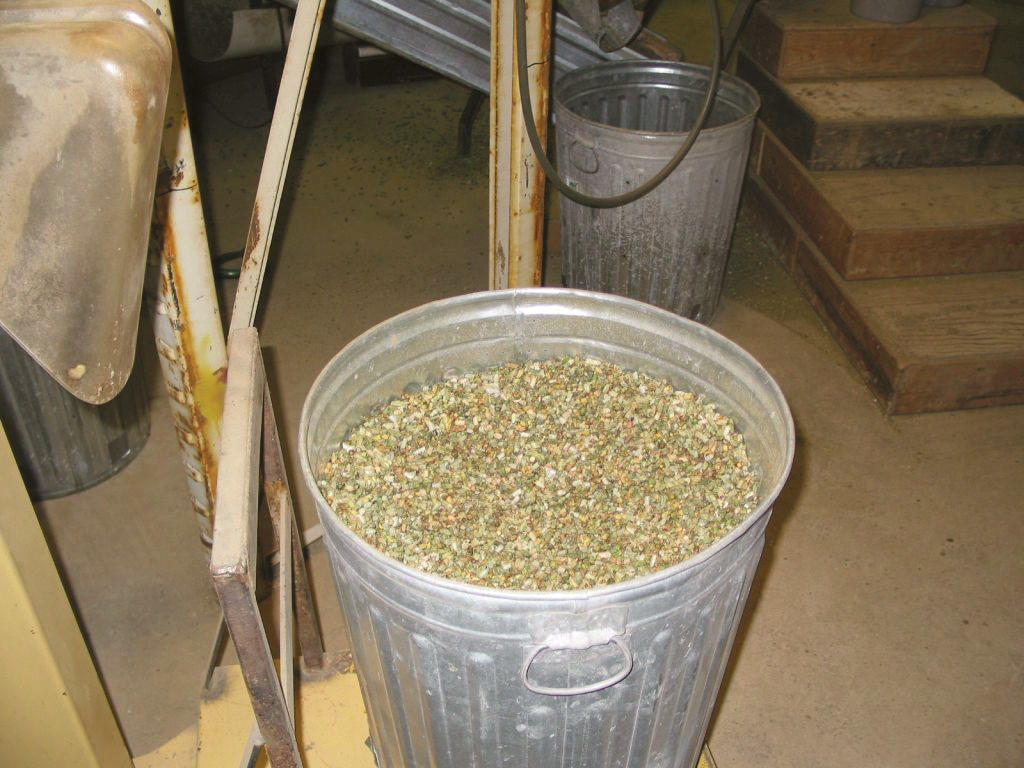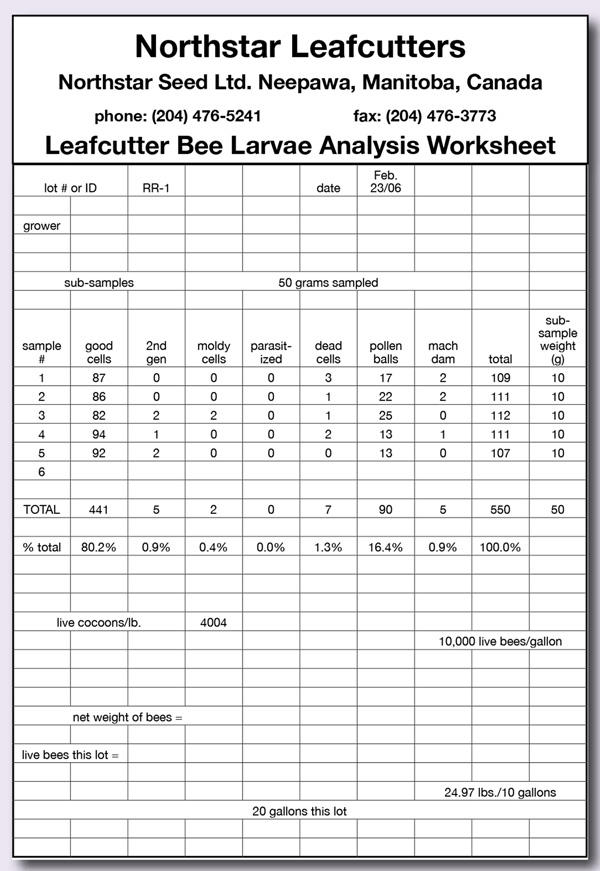
Leafcutter bees can be obtained by trap-nesting wild populations. To do this, nests are set out in the early spring in locations that have good numbers of wild bees, then the nests are removed in the fall. Ideal locations to place nests are on the sides of old barns or wooden farm structures, adjacent to cliff faces or other large visual landmarks, and near ungrazed pasture with sufficient flowers to support wild populations of bees. Nests can be hung inside of open sheds and garages or on south and east facing walls. In all cases, bee nests should be shielded from rain and direct sunlight.
Some individuals have successfully captured good populations of bees on western Bureau of Land Management (BLM) land. (BLM is part of the US Department of the Interior.) In the past, individuals have operated small businesses out of midwestern trap lines—with nests hung on the sides of barns at numerous farms, then collected and trucked to western states for alfalfa pollination the following year.
Theft of bee nests can be a problem, particularly in western states like Idaho that have an established history of leafcutter production. Bee nests in wild areas should be camouflaged, and marked with the owner’s name or symbol. Styrofoam nests are sometimes spray painted, and wooden nests have been marked with hot branding irons.
More commonly, bees are acquired as loose cells (Figure 7.11) from Canadian producers, forage seed dealers, or “bee brokers.” At the time of this writing there are few brokers of leafcutter bees in the US; often these brokers are not interested in selling small quantities of bees. Loose cells are normally stored in feed sacks and sold by the gallon. A gallon of loose cells may not be an actual gallon by volume, but rather is a measurement designating a quantity of approximately 10,000 dormant bees. The availability of Canadian produced bees varies from year to year and consequently the price also varies. During the past decade, the cost of Canadian produced bees has ranged from $25 to $100 per gallon.
The advantage of these loose cells is that they are normally certified by a regulatory agency which samples the bees for parasites and diseases. See the sidebar (below) on bee certification for more information.
Estimating Production: Cocoon Sampling and Certification
Counting plugged nest holes, or loose cells, is a poor way to estimate actual bee production. Plugged nests may contain few live larvae, or even empty chambers. Similarly, loose cells many contain chalkbrood-infested larvae, or no larvae at all (pollen balls).

Several public and private agencies in the US and Canada offer professional sampling and certification services that can provide estimates of the number of viable larvae by weight. These estimates can help determine the number of parasitized and diseased larvae, sex ratios, the number of second-generation bees, and the number of cells damaged by mechanical processing, among other things.
Professional laboratories typically sample cocoons through X-ray analysis, although it is possible to do this yourself with the cooperation of a friendly veterinarian. See Appendix B. X-Ray Procedures for Cavity-Nesting Bees for more information. In addition, labs may perform emergence tests that give an actual total of viable bees in a given sample. When purchasing bees from a commercial broker, they should be accompanied by a certification or analysis worksheet that details the results from these tests (Figure 7.12). If you are submitting samples for analysis, contact the lab for specific instructions.
Producers can also sample their own cocoons and bees, although results are likely to be less accurate than professional laboratory results. One simple method is to collect a number of cells at random. The larger your sample size, the more accurate your sample will be. A minimum of 100 cells should be sampled. For solid boards, cells can be removed by constructing a corkscrew-shaped wire probe and gently threading it inside the nest hole between the cells and the inside wall of the nest. This can be very difficult to do!
After collecting several cells, carefully cut the cap off the cell with a sharp penknife or razor blade. Cut into the cocoon, but try not to cut through the larva itself. If necessary examine the inside of the cocoon with a hand lens or dissecting microscope. The cell should contain a single white larva. If there are multiple white larvae inside, the cell has been parasitized by chalcid wasps. If the larva is gray or black and appears dusty or brittle, it is likely infected with chalkbrood. Record your findings.
To calculate percentages of various categories for analysis, multiply the number of larvae times 100, then divide by the number of cells you examined.
Here is an example:
352 cells were opened. Of these, 78 contained chalcid wasp larvae. What percentage was parasitized by chalicids?
(78 parasitized larvae x 100) / 352 opened cells = 22% parasitized larvae
Labs offering cell analysis:
Montana Department of Agriculture Alfalfa Seed Committee
University of Idaho Southwest Idaho Research and Extension Center
